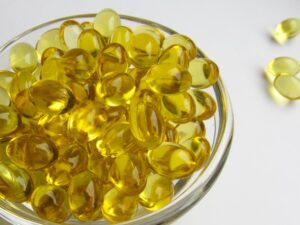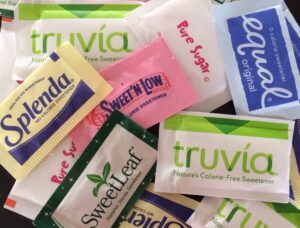
This is going to be one of many articles that I will be posting in the coming months where I talk about the negative health effects of milk. I am currently working on a book where I will discuss the role that growth factors, specifically IGF-1, found in milk, have on disease development.
Introduction
Acne is a very common occurrence among adolescents living in the United States. While acne itself is not dangerous, it can have significant negative effects on self-esteem and cause depression. Acne certainly has a genetic component, but dietary factors can have a significant influence as well. Unfortunately, it is not clear which foods cause acne. Well, I may be exaggerating. We know with near certainty of one food that has been consistently shown to influence acne. And what is that food? The answer is milk.
Milk consumption is prevalent in Western society, as is acne, which affects 79–95% of all adolescents (1). Responsible for this high prevalence of acne may be IGF-1 (insulin-like growth factor) and growth hormones, which alter the sebaceous glands in the face (1). Milk contains both IGF-1 and growth hormones and has been shown to raise circulating IGF-1 levels in children and adults.
Although acne has been viewed mainly as an androgen (male sex hormone)-based disorder, data has shown that the presence of acne is more closely correlated with growth hormone and IGF-1 levels. Serum concentrations of IGF-1 have been linked with the rate of sebum secretions (waxy or oily matter secreted in sebaceous glands) in the facial skin of adults.
Studies Showing that Milk Causes Acne
A 2012 study found that milk intake was associated with acne in Malaysian young adults (2). The study consisted of 44 patients with acne and 44 controls ages 18 to 30 years. High intakes of ice cream and milk were associated with an increased risk of acne. Consumption of milk or ice cream at least once a week or more was associated with a 4x increased risk of developing acne.
In a study of over 9,000 adolescent girls, researchers found that milk intake was significantly associated with the development of acne (3). Girls with more than 2 servings of total milk, whole milk, low-fat milk, and skim milk were 20%, 19%, 17%, and 19%, respectively, more likely to develop acne than girls with the lowest milk intake.
In the same study, researchers found a similar effect in adolescent boys. Boys with the highest total milk intake, whole/2%, low fat, and skim milk intake were 16%, 10%, 17%, and 19%, respectively, more likely to develop acne than boys that drank little to no milk (4). There was no association between non-milk dairy foods and acne (IGF-1 is only present in small amounts in cheese and yogurt).
Other Foods Associated with Acne
To be honest, milk is the only food consistently found to be associated with the development of acne, although a 2007 clinical trial found that switching to a low-glycemic-load diet improved acne in male subjects (5). The authors believe the improvement may involve improved insulin sensitivity, which shares a similar pathway to insulin-like growth factor (IGF-1).
A 2005 case-control study found that milk intake was associated with adolescent acne, while there was no association for high-saturated-fat, chocolate, soda, pizza, or French fries intake (6). Another very old study also found no link between chocolate intake and acne (7).
Conclusion
While it seems very likely that milk causes an increase in acne, overall, there are only a few high-quality controlled trials that have examined the relationship between diet and acne risk. The case for milk is made stronger because there seems to be a plausible reason why milk can cause acne, and it involves the insulin-like growth factor (IGF-1) system. Milk intake, without a doubt, raises IGF-1 levels, which are in turn associated with the presence of acne lesions. If you suffer from acne, you owe it to yourself to at least cut out milk for a period of time and see if it helps.
Sources
- Melnik, B. (2009). Milk consumption: aggravating factor of acne and promoter of chronic diseases of Western societies. JDDG: Journal der Deutschen Dermatologischen Gesellschaft, 7(4), 364-370.
- Ismail, N. H., Manaf, Z. A., & Azizan, N. Z. (2012). High glycemic load diet, milk and ice cream consumption are related to acne vulgaris in Malaysian young adults: a case control study. BMC dermatology, 12(1), 13.
- Adebamowo, C. A., Spiegelman, D., Berkey, C. S., Danby, F. W., Rockett, H. H., Colditz, G. A., … & Holmes, M. D. (2006). Milk consumption and acne in adolescent girls. Dermatology online journal, 12(4).
- Adebamowo, C. A., Spiegelman, D., Berkey, C. S., Danby, F. W., Rockett, H. H., Colditz, G. A., … & Holmes, M. D. (2008). Milk consumption and acne in teenaged boys. Journal of the American Academy of Dermatology, 58(5), 787-793.
- Smith, R. N., Mann, N. J., Braue, A., Mäkeläinen, H., & Varigos, G. A. (2007). A low-glycemic-load diet improves symptoms in acne vulgaris patients: a randomized controlled trial–. The American journal of clinical nutrition, 86(1), 107-115.
- Adebamowo, C. A., Spiegelman, D., Danby, F. W., Frazier, A. L., Willett, W. C., & Holmes, M. D. (2005). High school dietary dairy intake and teenage acne. Journal of the American Academy of Dermatology, 52(2), 207-214.
- Fulton EJ, Plewig G, Kligman AM. Effect of chocolate on acne vulgaris. J Am Med Assoc 1969; 210: 2071–2074



